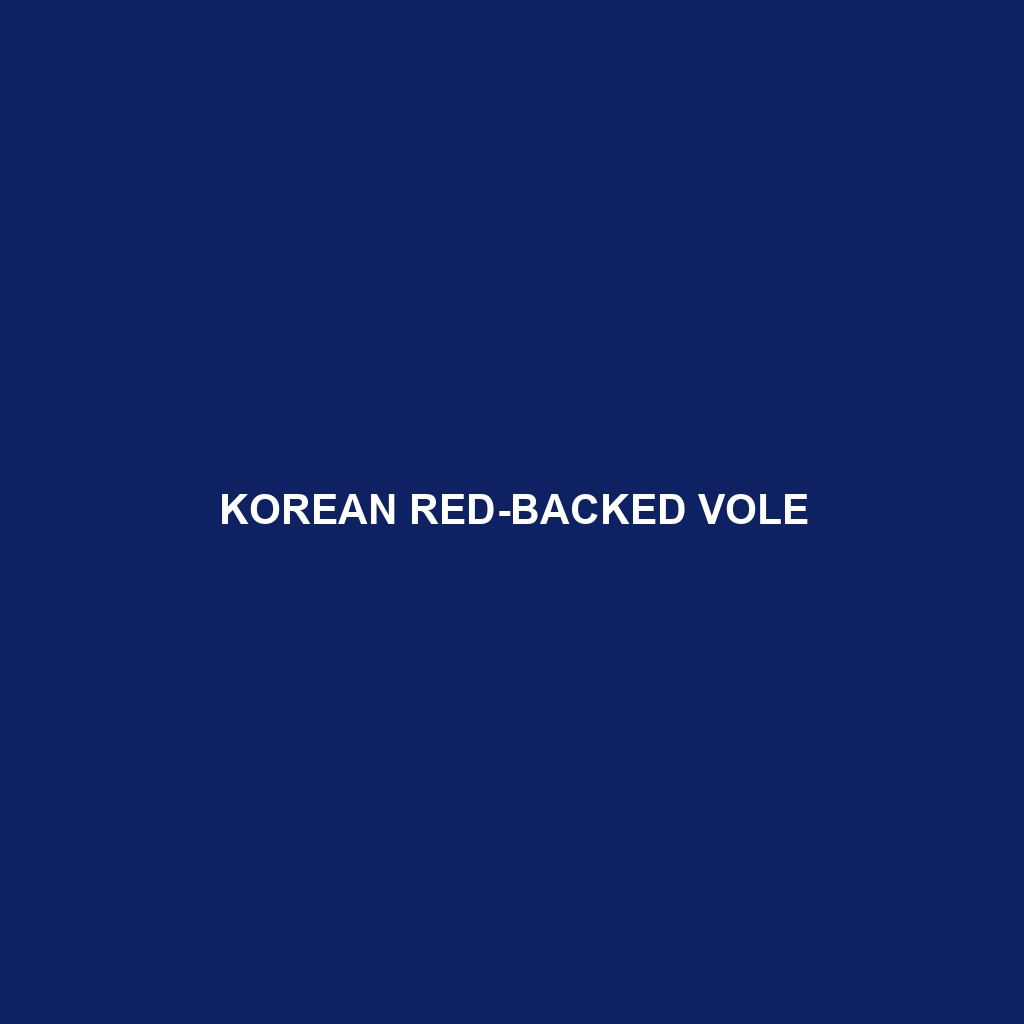Korean Red-backed Vole
Common Name: Korean Red-backed Vole
Scientific Name: Eothenomys dynomys
Habitat:
The Korean Red-backed Vole is primarily found in the temperate forests of South Korea, particularly in regions with dense undergrowth and abundant ground cover. These small mammals thrive in moist environments, preferring areas near streams and moist deciduous forests where they can find shelter and food. Their habitat ranges extensively across the Korean Peninsula, extending to parts of eastern China and southern Russia.
Physical Characteristics:
This species is characterized by its small size, typically measuring about 10 to 12 centimeters in body length, excluding the tail, which adds another 6 to 8 centimeters. The Korean Red-backed Vole features a distinctive coloration with a reddish-brown stripe running down its back, complemented by a lighter underbelly. Its fur is dense and soft, providing insulation, while its round body shape and short limbs aid in burrowing activities. The eyes are small and dark, emphasizing its excellent adaptation to low-light environments.
Behavior:
Korean Red-backed Voles are primarily nocturnal and exhibit behaviors typical of grassland and woodland rodents. They are known for their burrowing habits, creating intricate tunnel systems that provide shelter from predators. These voles also engage in social behaviors, often being found in small family groups. During the foraging phase, they exhibit a mix of foraging on the surface and digging for roots and tubers, making them fascinating subjects for study.
Diet:
The diet of the Korean Red-backed Vole consists mainly of herbaceous plants, seeds, and bulbs. They are particularly fond of grasses and sedges, as well as roots and tubers, which provide essential nutrients. The feeding habits of Korean Red-backed Voles include a behavior called “caching,” where they store food for later consumption, ensuring survival during harsher conditions.
Reproduction:
Reproduction in the Korean Red-backed Vole typically occurs during the warmer months, notably from April to August. The females are known to produce several litters each season, with each litter containing 2 to 6 offspring. The young are born blind and hairless, relying on their mother for nourishment and protection as they develop. Notably, mothers exhibit strong protective behaviors towards their young, enhancing their survival rates.
Conservation Status:
The Korean Red-backed Vole is currently classified as Vulnerable according to the IUCN Red List. Habitat destruction due to urbanization and agriculture poses significant threats to their populations. Conservation efforts are underway to protect their natural habitats and ensure the sustainability of this unique species.
Interesting Facts:
One fascinating aspect of the Korean Red-backed Vole is its ability to survive in cold temperatures, thanks to its thick fur and well-insulated burrows. Moreover, they play a crucial role in their ecosystem by helping to aerate the soil through their burrowing activities, which can enhance plant growth in their habitats.
Role in Ecosystem:
The Korean Red-backed Vole is an essential part of its ecosystem, serving as both a prey species for various predators and a contributor to soil health. By feeding on plants and dispersing seeds, they help promote vegetation growth, while their burrowing helps to aerate the soil. This creates a balanced ecosystem where they interact with a variety of other species, including insects and birds of prey.
